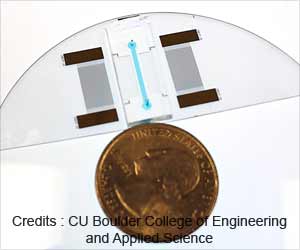A key trigger for producing normal red blood cells that could lead to new treatments for those with sickle cell disease has been revealed by researchers.

According to the U-M study, increasing the expression of the proteins, TR2 and TR4, more than doubled the level of fetal hemoglobin produced in sickle cell mice and reduced organ damage.
It's the first time specific proteins have been targeted to prevent a disease, authors say.
"The vast majority of sickle cell disease patients are diagnosed early in childhood when adult hemoglobin normally replaces fetal hemoglobin, but the severity of the disease can differ markedly, correlating most strongly with the level of fetal hemoglobin present in red cells," says pediatrician and lead study author Andrew D. Campbell, M.D., director of the Pediatric Comprehensive Sickle Cell Program at the U-M Cancer Center.
Sickle cell is an inherited blood disorder impacting hundreds of thousands of patients worldwide that causes normal red blood cells to change shape to a crescent moon.
The result is life-long debilitating pain episodes, chronic organ damage and significantly shortened life span. But a small number of sickle cell patients are born with a high enough fetal hemoglobin level to moderate these complications.
Advertisement
"While the average fetal hemoglobin was 7.6 percent in the sickle cell mice, the TR2/TR4 treated sickle cell mice had an average fetal hemoglobin of 18.6 percent," says senior study author James Douglas Engel, Ph.D. , professor and chair of the U-M's Cell and Development Biology Department.
Advertisement
"Currently hydroxyurea is the only FDA approved drug known to increase the levels of fetal hemoglobin within sickle cell disease patients and a substantial number of patients do respond to it," says Campbell, the pediatric hematology oncology specialist. "But the long term consequences for hydroxyurea are unknown, especially in children."
Source-Eurekalert








